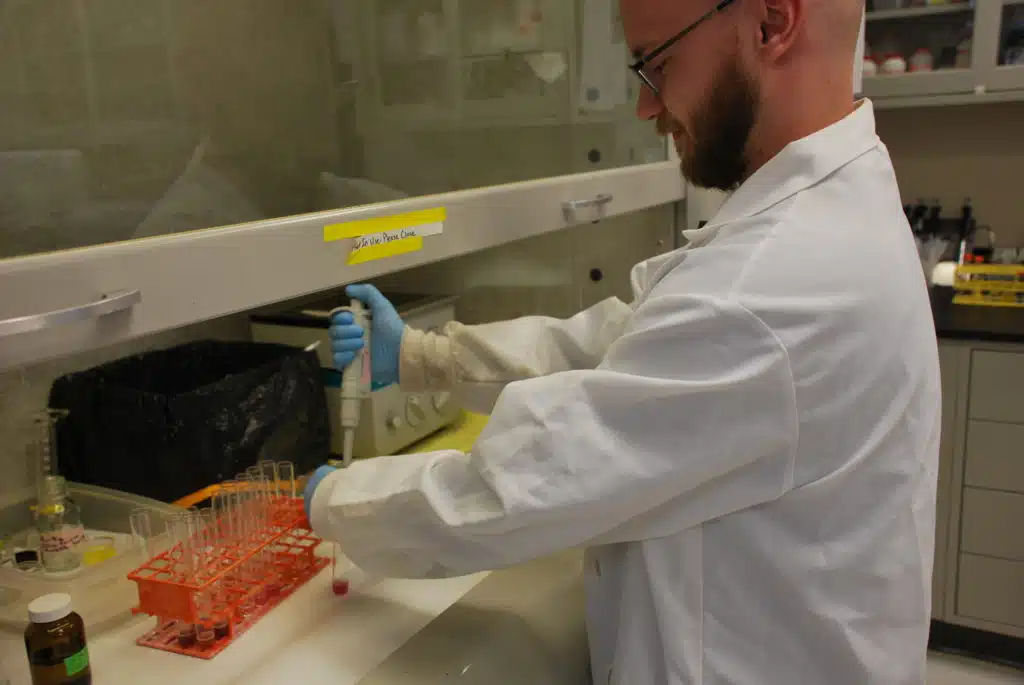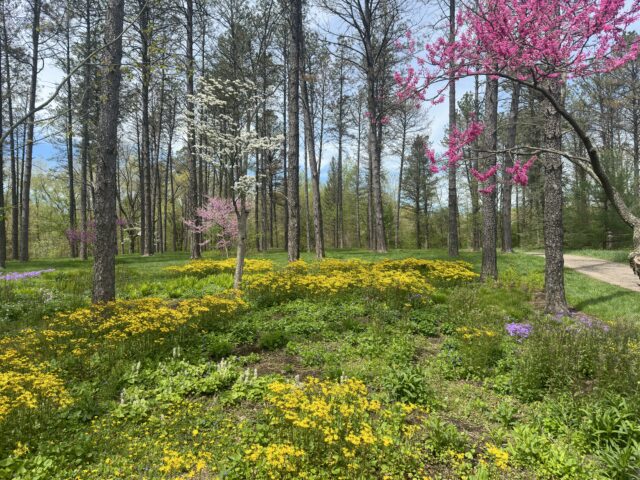The Sweet Side of Winter: Carbohydrate Dynamics during Cold Acclimation
December 8, 2022

By Samuel Harbol, Norweb Fellow
Deciduous plants such as maple trees lose their leaves in winter, and this helps them to survive cold temperatures, but what about our evergreen friends, how are they handling the cold? The answer is, they brace themselves for cold temperatures through a process called cold acclimation. Evergreens need to protect their vulnerable leaf tissue from the cold, and cold acclimation is necessary to survive below-zero temperatures.
Evergreen plants respond to fall by making physiological changes that make them more cold-resistant. One physiological response is to change non-structural carbohydrate levels. Non-structural carbohydrates are a class of molecule that are found inside plant cells, including sugar and starch, which are the main products of photosynthesis. These carbohydrate levels change during cold acclimation and measuring how they change provides us with a lot of information on how the plant is responding to the winter environment. Sugar is made by plants during photosynthesis, and just like humans, plants use sugar to grow. When the plant has plenty of sugar, it will convert some of that sugar to starch, allowing the plant to store excess energy for later use. Sugar also has a lot more functions outside of being an immediate energy source. When sugar accumulates in plant cells it acts like antifreeze, preventing ice formation within the cells. Thus, during winter when frost risk increases, sugar levels inside plant cells will increase. In other words, to deal with the cold, plants will make their cells sweeter.
For my research project as a Norweb Fellow at the Holden Arboretum, I investigated the cold acclimation response of Juniperus virginiana (Eastern red cedar), and how the non-structural carbohydrates change during cold acclimation. I looked at plants from a warm climate (Florida) and a cold climate (South Dakota) and found that plants from Florida accumulate more sugars during freezing than plants from South Dakota. Florida plants were also slower to cold acclimate, making them less cold hardy in fall compared to plants from South Dakota. Indeed, plants from Florida only become cold hardy once temperatures consistently reach below freezing. All this is to say, plants from Florida are more stressed out by the cold than plants from South Dakota!

In fact, it makes sense that plants from colder environments are better at cold acclimation. Knowing this, as you visit the Holden Arboretum during the winter months, consider the different ways that plants can respond to cold winters. Do they keep their leaves and make them extra cold-hardy, do they lose their leaves like maple trees, or do they take the herbaceous perennial route and simply hide underground and resprout from roots once warm conditions return?
Even though we know that there are different types of strategies to survive winter, we still have a lot to learn about how plants cold acclimate, especially in a changing climate. Cold acclimation begins in fall when the days start to get shorter, and full cold-hardiness is reached once the plant experiences a frost. Given that climate change will alter the temperature but not the daylength of fall and winter, what may cold acclimation responses look like when fall and winter are warmer, but days are just as short? What happens if a warm fall prevents plants from reaching sufficient cold hardiness levels and then a very hard frost occurs? My work is directly addressing these questions, and one possibility is that plants may be killed by frost if they can’t cold acclimate, but if plants can make their cells sweeter, they just may survive after all!
Samuel Harbol











